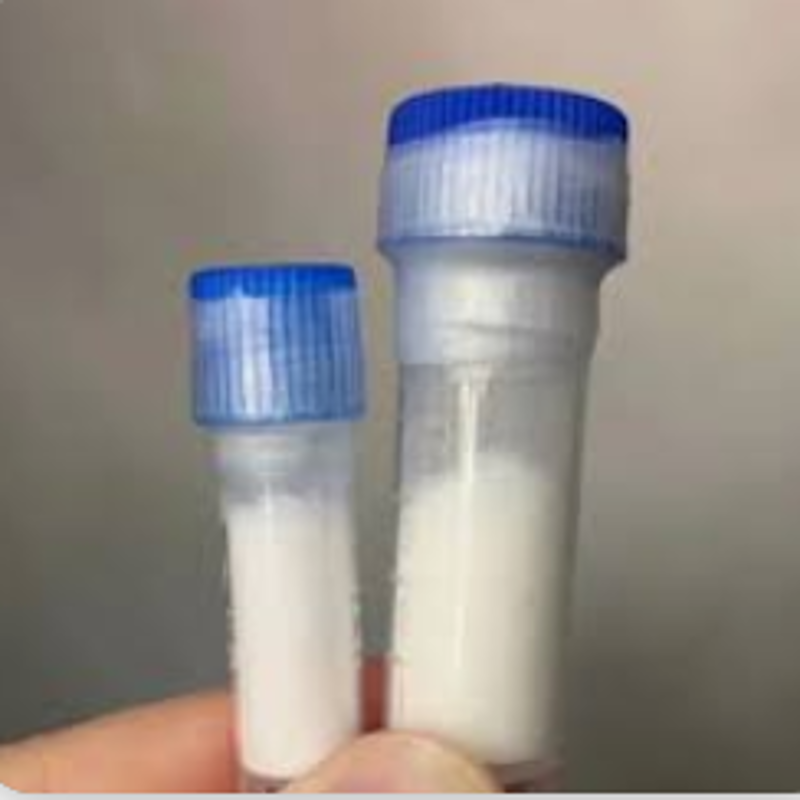-
Categories
-
Pharmaceutical Intermediates
-
Active Pharmaceutical Ingredients
-
Food Additives
- Industrial Coatings
- Agrochemicals
- Dyes and Pigments
- Surfactant
- Flavors and Fragrances
- Chemical Reagents
- Catalyst and Auxiliary
- Natural Products
- Inorganic Chemistry
-
Organic Chemistry
-
Biochemical Engineering
- Analytical Chemistry
-
Cosmetic Ingredient
- Water Treatment Chemical
-
Pharmaceutical Intermediates
Promotion
ECHEMI Mall
Wholesale
Weekly Price
Exhibition
News
-
Trade Service
On September 22, Cell Stem Cell published a research paper online entitled "Neuron repair loop reshaping nerve function from human stem cell sources", which improved the behavioral disorders of parkinson's disease model animals by analyzing the reconstructed neural loop of human dopamine neurons transplanted in mouse brains.
The study was conducted by Chen Yuejun, a researcher at the Center for Brain Science and Intelligent Innovation of the Chinese Academy of Sciences (NEUROSC), the Shanghai Brain Science and Brain Research Center, and the Primate Neurobiology Key Laboratory of the Chinese Academy of Sciences, in collaboration with zhou Wenhao/Xiongman Research Group of Fudan University's affiliated Pediatric Hospital and Zhang Suchun Research Group of the University of Wisconsin, USA.
neurons are the basic functional units of the brain, there are thousands of different types of neurons in the brain, neurons form complex and precise network connections (neural loops), is the basis for the perception of the world, thinking and behavior.
More neurological disorders, including stroke, brain trauma, and neurodegenerative diseases (Parkinson's disease and Alzheimer's disease, etc.), all lead to the loss of neurons in the brain and the destruction of neural connections, which in turn can lead to severe neurological disorders such as paraplegia, slow movement, muscle stiffness, and impaired learning and memory.
, however, adult mammals, including humans, have limited capacity for nerve regeneration in the brain, and there is a lack of effective clinical treatment for diseases in which the loss of these neurons leads to damage to neural connections and impaired nerve function.
can replace the function of lost nerve cells in the brain (stem cell therapy) by transplanting stem cell-sourced nerve cells in the brain, is one of the potential treatments.
the key to stem cell therapy for neurological disorders is the repair and functional reconstruction of damaged neural loops, and precise network connections between neurons in the brain are gradually formed during development, involving complex mechanisms for the growth of nerve fibers.
in the adult disease brain environment, it remains unclear whether transplanted nerve cells can grow nerve fibers, bridge "lost" upstream and downstream brain regions, and repair damaged neural loops.
is this repair the result of random integration of transplanted cells or a specific repair? What are the mechanisms and principles behind them? These are the key issues that need to be solved urgently in the field of stem cell therapy for neurological diseases.
to these problems, the team used Parkinson's disease as a model to study the feasibility and mechanism of repairing damaged neural loops in nerve cells from stem cell sources transplanted into the adult brain.
Parkinson's disease is a neurodegenerative disease with static tremor, muscle strength and slow movement as the main manifestations, the main reason is the brain's dark brain region of dopamine energy neurons for sexual loss, resulting in the black brain region to the strium brain region of the nerve connection damage, resulting in the stria body dopamine secretion deficiency, and ultimately lead to the patient's motor function disorders.
team members are working to develop human stem cell neurodifferentiation techniques for different types of neurons, and on this basis to establish an efficient method of brain mesopotamine-energy neurons in human stem cell differentiation.
further genetic markers of human stem cells using gene-editing techniques, allowing human dopamine neurons and their nerve fibers to specifically trace stem cell sources.
Study transplanted genetically labeled human dopamine neurons into the damaged black brain region of Parkinson's disease model mice, and found that human dopamine neurons transplanted in the black brain region grew large amounts of nerve fibers, growing specifically and extending to their endogenous target region- sethosomes, forming nerve connections with symposome neurons, and most of the neurofibers were projected into the symposome.
further, using genetic techniques and rabies-mediated tracer techniques, tracked upstream nerve dominance received by human dopamine neurons in black transplants, and found that transplanted human dopamine neurons received neurodegeneration similar to endogenous black dopamine neurons.
study of neuron electrophysiological function found that transplanted human dopamine-energy neurons exhibited electrophysiological properties similar to those of endogenetic mice's black dopamine-energy neurons and received similar neurotransmitter regulation.
These results show that human dopamine neurons transplanted in parkinson's model mice were able to repair and reconstruct damaged black-staphular neural connections, and that their structure and function were highly consistent with endogenetic neural connections.
study found through behavioral testing that the motor dysfunction of mice in the cell transplant group gradually improved with the extension of transplant time, and through chemical genetics technology to inhibit the activity of transplanted nerve cells, the improvement of motor function in mice disappeared, suggesting the recovery of neurofunctional connectivity mediated model mouse behavior reconstructed by transplant cells.
study in Parkinson's model mice black transplanted another type of nerve cell - human cortical glutamate energy neurons, the nerve fibers are mainly projected to the cortical layer and olfactory brain region, almost no projection to the symposia, can not repair the damaged black-stamorphic nerve loop, model animal motor dysfunction can not be improved, indicating that only certain types of cells can repair a specific neural circuit.
the study suggests that damaged neural connections in the adult brain can be repaired structurally and functionally by transplanting nerve cells from stem cell sources, reshaping nerve function.
same time, the study also found that different types of nerve cells have different effects on loop repair, suggesting that for different types of neuron loss caused by neurological diseases, targeted transplantation of specific nerve cells for loop repair and treatment.
findings provide new ideas and theoretical basis for the treatment of brain damage and neurodegenerative diseases.
present, the main types of nerve cells in the human brain can be obtained efficiently in-body through stem cell neural differentiation technology, and the development of stem cell technology will bring new hope for the treatment of many neurological diseases.
()







